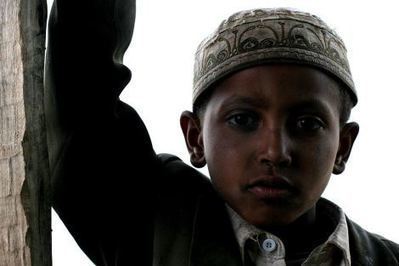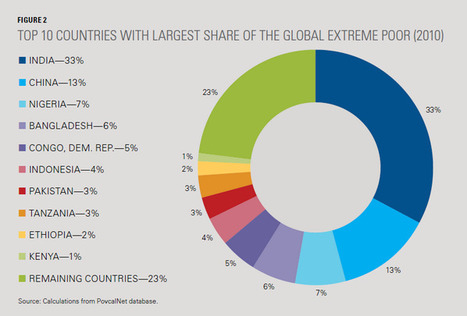Sixty of Mexico's native languages are at risk of being silenced forever—but many people are working to keep them alive, experts say.
Get Started for FREE
Sign up with Facebook Sign up with X
I don't have a Facebook or a X account

 Your new post is loading... Your new post is loading...
 Your new post is loading... Your new post is loading...
Jacob Crowell's curator insight,
December 17, 2014 10:45 PM
We talk about McDonalds as a way of Americanizing the rest of the world. These foods show that it may still be the case but local culture is still infused and desired where McDonalds expands to. 
Payton Sidney Dinwiddie 's curator insight,
January 21, 2015 9:40 PM
This shows that mmcdonals is a global industy . there are many mcdonalds everywhere they put a spin oncertain diishes to match their heritage like in japan instead of hamburger meat like we americans use the use crabs.It just really shows how far mcdonalds was changed from just starting in america to being featured all over the globe 
Kristin Mandsager San Bento's curator insight,
January 22, 2015 7:06 PM
I've lived and traveled to a few places especially Asia. I've had the Ramen at McD's in Hawaii along with the Portugeuse sausage that comes with the big breakfast. I've also experienced Japanese McD's. It was nice to be able to find some of the regular food like a burger and fry at any McD's in the world, but I never ordered anything else. |
Avery Liardon's curator insight,
March 23, 2015 9:48 PM
Unit 3: Shines insight on stereotypes that are commonly used throughout the world. Reading this article really made me think about stereotypes that are so commonly used they are considered acceptable. It's a ridiculous idea to think that all people under a culture act and behave the same way.
Emily Coats's curator insight,
March 24, 2015 12:06 PM
UNIT 3 CULTURE This article is written to compare and contrast various ways to teach young school children about global cultures. On one hand, we can relate all cultures to each other, due to their common goals and views. For example, all families around the world aim to do what's best for each other, love and cherish one another, and try their hardest to succeed economically. On the other hand, cultures are extremely different around the world, with different music, clothing, and underlying views on life. We can continue to say that popular culture has diffused so greatly, with advanced technologies and means of transportation, so it has influenced and homogenized our landscape quite a bit. Folk culture is obviously still a powerful force, but popular culture does have some effects around the world. I believe that children need to understand the importance of maintaining diversity thy preserving folk culture but they also need to acknowledge the pros and cons of the global diffusion of popular culture and how it connects us at a global scale.
Danielle Smith's curator insight,
April 12, 2015 12:21 AM
I think Teaching Cultural Empathy: Stereotypes, World Views and Cultural Difference is a helpful article for teachers to read. This article considers ideas I constantly come back to, whilst collecting resources and ideas for teaching students about cultural diversity and identity. How do I teach students, that ‘people and cultures are different all over the world’ (Dixon, 2015, April 2), but also the same? Dixon suggests that we need to teach that people and cultures worldwide are the SAME and DIFFERENT simultaneously. In this way, students can appreciate the rich diversity of cultures and societies, whilst at the same time learning values of humanity and empathy, which unite us all.
I believe by recognising and appreciating the rich cultures of students in the classroom, we can explore and learn about cultural diversity in an honest, rich and non-stereotypical way and allow students to feel valued at the same time. In addition, as students know each other, this helps them relate to ‘people from other places, who speak other languages’ and follow different religions to their own (Dixon, 2015, April 2). Furthermore, this should help increase intercultural understanding in the classroom by developing a ‘socially cohesive’ environment that ‘respects, and appreciates cultural, social and religious diversity’ (MYCEETA, p. 7).
References Dixon, S. (2015, April 2). Teaching cultural empathy: Stereotypes, world views and cultural difference. National Geographic. Retrieved April 7, 2015, http: http://blog.education.nationalgeographic.com/2015/02/04/teaching-cultural-empathy-stereotypes-world-views-and-cultural-difference/
Ministerial Council on Education, Employment, Training, and Youth Affairs. (2008, December). Melbourne declaration on educational goals for young Australians. Melbourne: Author.

dilaycock's curator insight,
May 5, 2014 8:52 PM
This information is taken from the World Bank's 2014 report "Prosperity for All." The report looks at "progress to date in reducing global poverty and discusses some of the challenges of reaching the interim target of reducing global poverty to 9 percent by 2020.... . It also reports on the goal of promoting shared prosperity, with a particular focus on describing various characteristics of the bottom 40 percent."
Sid McIntyre-DeLaMelena's curator insight,
May 29, 2014 12:48 PM
This graphic reveals the poorest populations and where they live and even though India and China are economic competitors on the global stage they still have the poorest communities. IN poor communities, the human place is changed by using less structurally sound architecture and disregarding cultural presence for functionality though holding true to cultural presence in individual lives. 
Amanda Morgan's curator insight,
September 18, 2014 11:49 AM
I agree with this article from the Guardian that development should be measured in human rights gains more than economic advancements. While globalization is taking place and allowing countries to trade and maximize profits, a large percent of people in the world are deprived basic human rights and are entirely forgotten about and not valued. |













The demise of a language is a truly tragic event. I am heartened to see that there are efforts being undertaken to preserve these historic languages. New technologies will hopefully aid us in this effort. I imagine that the United States probably faces similar issues when it comes to language loss. We should coordinate some sort of national policy in how to deal with the issue. The current state of political affairs will probably hamper the cause, but it is still worth a shot. I am in full support of all efforts that might preserve these classic languages.
This is one of the reasons that when immigrants come into this country its important they keep their native language going as well as learning to speak English. The sharing of culture, and language is indeed very important. Lots of people come to America and are told to speak English and eventually they lose their native language as well as culture. The English speaking only citizens of this country lose out on a good education about someone's native country. Its too bad. Just think music, language, food, values etc...there is a lot to learn.